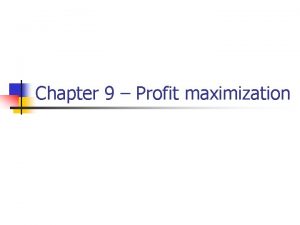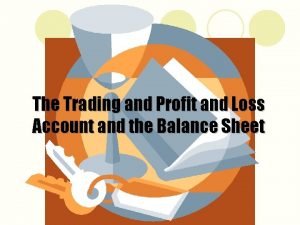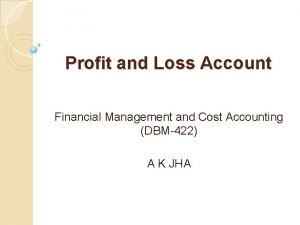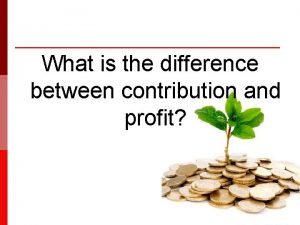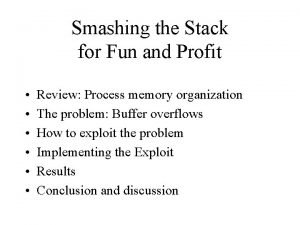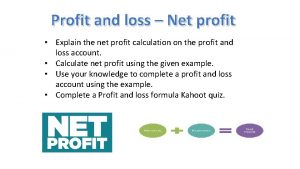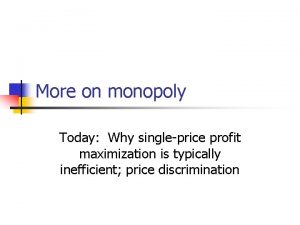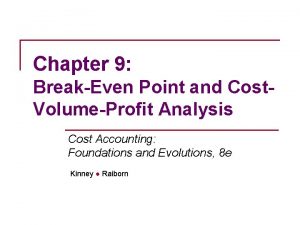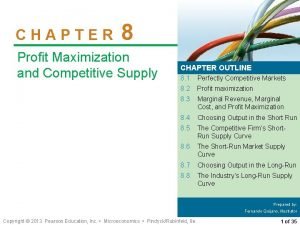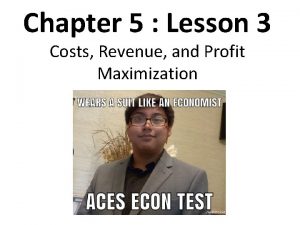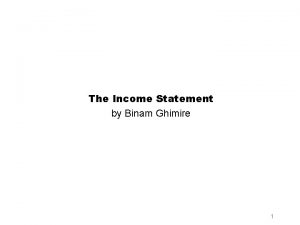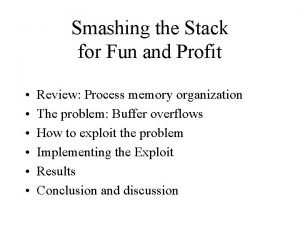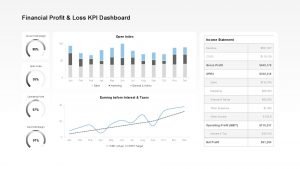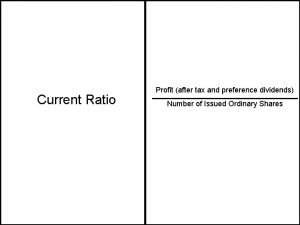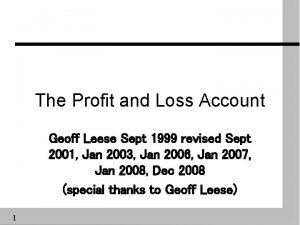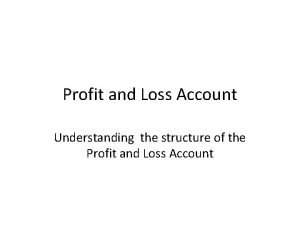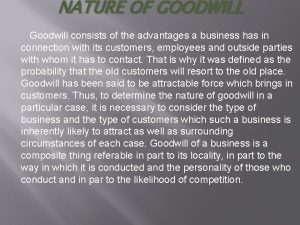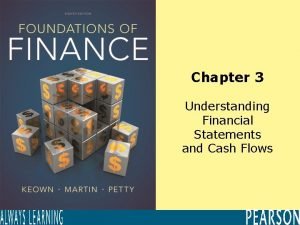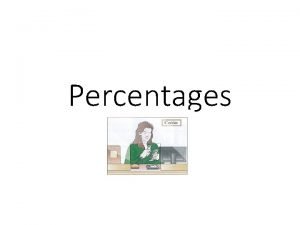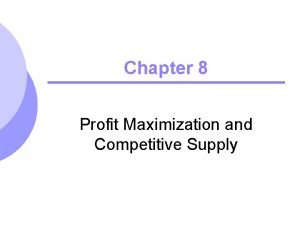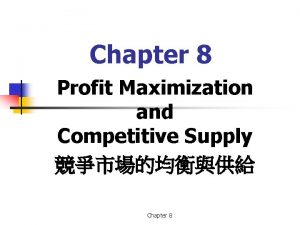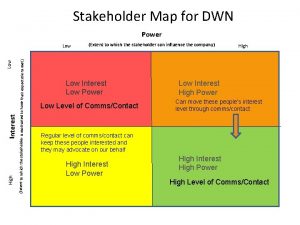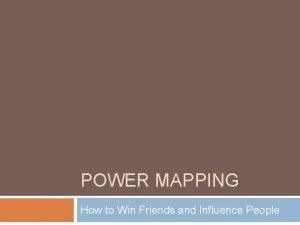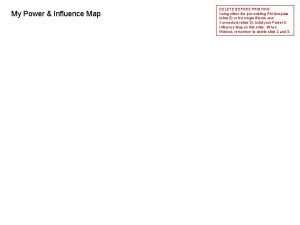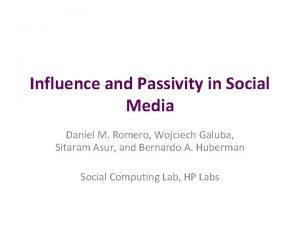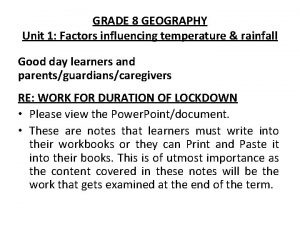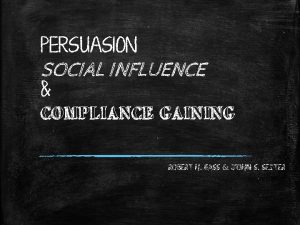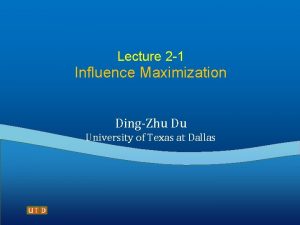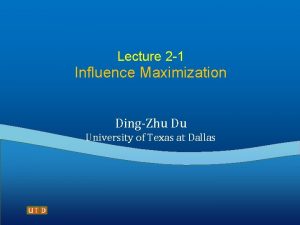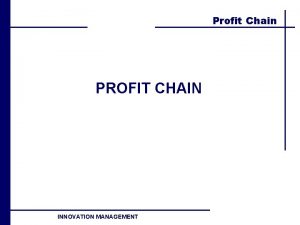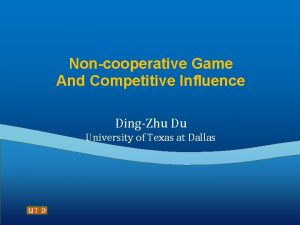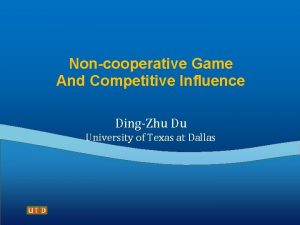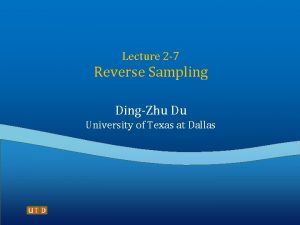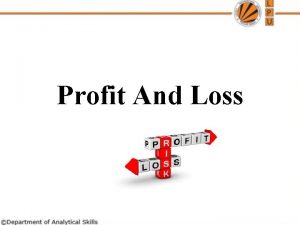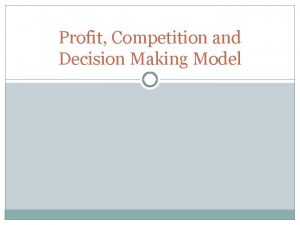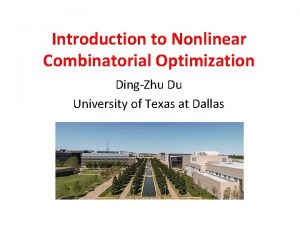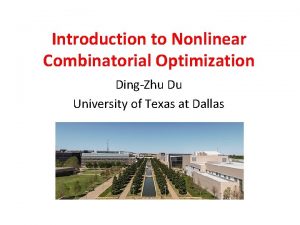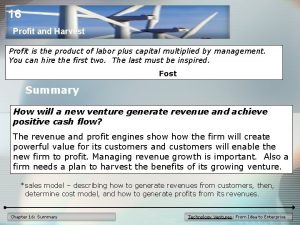Lecture 3 Influence and Profit DingZhu Du University

















































![Publications Book Chapter [1] Lidong Wu, Weili Wu, Zaixin Lu, Yuqing Zhu, and Ding-Zhu Publications Book Chapter [1] Lidong Wu, Weili Wu, Zaixin Lu, Yuqing Zhu, and Ding-Zhu](https://slidetodoc.com/presentation_image/cc3528935e7e78b439299beb59e24500/image-50.jpg)
![[9] Songsong Li, Yuqing Zhu, Deying Li, Donghyum Kim, Huan Ma, and Weili Wu, [9] Songsong Li, Yuqing Zhu, Deying Li, Donghyum Kim, Huan Ma, and Weili Wu,](https://slidetodoc.com/presentation_image/cc3528935e7e78b439299beb59e24500/image-51.jpg)
![[20] Yuanjun Bi, Weili Wu, Yuqing Zhu, Lidan Fan, and Ailian Wang, “A Nature-Inspired [20] Yuanjun Bi, Weili Wu, Yuqing Zhu, Lidan Fan, and Ailian Wang, “A Nature-Inspired](https://slidetodoc.com/presentation_image/cc3528935e7e78b439299beb59e24500/image-52.jpg)

- Slides: 53

Lecture 3 Influence and Profit Ding-Zhu Du │ University of Texas at Dallas │ 1

Ph. D Dissertation: Optimization in Social Networks -Influence and Profit Candidate: Yuqing Zhu Advised by Prof. Weili Wu and Prof. Ding-Zhu Du 10/6/2020 2

Influence and Profit: Two Sides of the Coin 13 th IEEE International Conference on Data Mining (ICDM 2013) Yuqing Zhu 10/6/2020 3

Overview · Background: Social Influence Propagation & Maximization · Influence and Profit · Proposed Model & Its Properties · BIP Maximization Algorithms · Experimental Results · Conclusions 10/6/2020 4

Influence in Social Networks · We live in communities and interact with friends, families, and even strangers · This forms social networks · In social interactions, people may influence each other 10/6/2020 5

Influence Diffusion & Viral Marketing Word-of-mouth effect i. Pad Air is great 10/6/2020 Source: Wei Chen’s KDD’ 10 slides 6

Social Network as Directed Graph 0. 13 0. 6 0. 3 0. 1 0. 27 0. 41 0. 54 0. 16 0. 2 0. 7 0. 11 0. 2 0. 1 0. 8 0. 7 0. 9 ·Nodes: Individuals in the network ·Edges: Links/relationships between 10/6/2020 individuals ·Edge weight on : Influence 7

Linear Threshold (LT) Model – Definition · Each node chooses an activation threshold uniformly at random from [0, 1] · Time unfolds in discrete steps 0, 1, 2… · At step 0, a set �� of seeds are activated · At any step , activate node if · The diffusion stops when no more nodes can be activated · Influence spread of �� : The expected number of active nodes by the end of the diffusion, when 10/6/2020 targeting �� initially 8

Linear Threshold(LT) Model – Example y 0. 6 Active Node 0. 2 0. 3 Inactive Node 0. 2 Threshold x 0. 1 0. 4 U 0. 5 w 10/6/2020 Total Influence Weights 0. 3 0. 5 Influence spread of {v} is 4 0. 2 v Stop ! Source: David Kempe’s slides 9

Independent Cascade (IC) Model – Definition is the probability of success when tries to activate · Time unfolds in discrete steps 0, 1, 2… · At step 0, a set �� of seeds are activated · At any step , a newly activated node has one chance to active its out-neighbor , with probability · The diffusion stops when no more nodes can be activated · Influence spread of �� : The expected number of active nodes by the end of the diffusion, when 10/6/2020 targeting �� initially · 10

Independent Cascade(IC) Model – Example y 0. 6 Active Node 0. 2 0. 3 Inactive Node 0. 2 Threshold x 0. 1 0. 4 U 0. 5 w 10/6/2020 Total Influence Weights 0. 3 0. 5 Influence spread of {v} is 4 0. 2 v Stop ! Source: David Kempe’s slides 11

Influence Maximization Problem Input Select k individuals such that by activating them, influence spread is maximized. NP-hard #P-hard to compute exact influence Output A directed graph representing a social network, with influence weights on edges 10/6/2020 12

Influence and Profit 10/6/2020 13

Influence vs. Profit · Classical models do not fully capture monetary aspects of product adoptions ·Being influenced Being willing to purchase · Classical models do not consider the willingness the active nodes on spreading the influence ·Being influenced Being willing to spread the influence 10/6/2020 14

Influence vs. Profit · Influence: · Profit: · In market, a famous company does not always make generous profit. E. g. Twitter, SONY, Weibo 10/6/2020 15

Product Adoption · Product adoption is a two-stage process (Kalish 85) · 1 st stage: Awareness ·Get exposed to the product ·Become familiar with its features · 2 nd stage: Actual adoption ·Only if valuation outweighs price ·Only in this case the company gains real profit · The 2 nd stage is not captured in existing work 10/6/2020 16

Valuations for Products 10/6/2020 17

Our Contribution · Incorporate monetary aspects to model the willingness of the nodes on spreading influence · Price-Related (PR) Frame ·PR-L model ·PR-I model LT model IC model · Balanced Influence and Profit (BIP) Maximization Problem · Two Marketing Strategies: ·Binar. Y pri. Cing (BYC) ·PAnoramic Pricing (PAP) 10/6/2020 18

Proposed Model & Problem Definition 10/6/2020 19

Price Related (PR) Frame Neutral Rules in IC or LT Influenced Active · Three node states: Neutral, Influenced, and Active · Neutral Influenced: same as in LT or IC · Influenced Active: Only if the valuation is at least the quoted price · Only active nodes will propagate influence to inactive neighbors 10/6/2020 20

Pricing Strategies ·Binar. Y pri. Cing (BYC) ·PAnoramic Pricing (PAP) 10/6/2020 21

BIP: Notations each node ·: the seed set : the vector of quoted prices, one per R: the influence function · : the expected influence earned by targeting setting prices · and R: the profit function · : the expected profit earned by targeting setting prices · and : the objective function of balanced Influence and Profit problem · 10/6/2020 22

BIPMax Problem Definition Input Problem Select a set of seeds & determine a vector of quoted price, such that the is maximized under the PR Frame Output A directed graph representing a social network, with influence weights on edges 10/6/2020 23

BIPMax vs. Inf. Max · Difference w/ Inf. Max under LT/IC ·Propagation models are different & have distinct properties ·Inf. Max only requires “binary decision” on nodes, while BIPMax requires to set prices 10/6/2020 24

A Restricted Special Case · Simplifying assumptions: ·Valuation: ·Pricing: BYC (Seeds get the item for free) ·Every seed will automatically adopt the product and propagate the influence · Optimal price vector is out of question 10/6/2020 25

A Restricted Special Case · : The uniform price for every non-seed · : production cost · max: 10/6/2020 26

A Restricted Special Case ·Theorem 1: Under PR-I model, when , maximizing B(S) is in P (can be solved in polynomial time). ·Equivalent to: how to find the minimum set of nodes such that there is a path from this set to each node in this graph. 10/6/2020 27

·Theorem 1: 10/6/2020 28

A Restricted Special Case ·Theorem 2: Under PR-I model, when , maximizing B(S) is NP-hard. ·Reduction from the Set Cover problem ·Theorem 3: Under PR-L model, for any , maximizing B(S) is NP-hard. ·Reduction from the Vertex Cover problem 10/6/2020 29

s 1 s 2 u 1 u 3 s 3 u 4 s 4 u 5 u 6 u 7 ·Set Cover problem. 10/6/2020 v 1 u 2 v 6 v 4 v 5 v 3 v 7 v 8 ·Vertex Cover problem. 30

… … … … ·Theorem 2: Reduction from the Set Cover problem. 10/6/2020 31

… … ·Theorem 3: Reduction from the Vertex Cover problem. 10/6/2020 32

Algorithms for BIP Maximization 10/6/2020 33

BIPMax Algorithms · Given the distribution function (CDF) of . Define: · the Optimal Price is ·Myopic: Ignores network structures and “profit potential” (from influence) of seeds 10/6/2020 34

Determining the Seeds and Prices under BYC 1) Assign all the nodes a uniform price : 2) Pick the node that brings the maximum profit: 10/6/2020 35

Determining the Seeds and Prices under PAP · Two possible results after offering price to : accepts, . The influence collected from is 1 and the profit is. · does not accept, . The influence collected from it is 1 and the profit is 0. · 10/6/2020 36

Determining the Seeds and Prices under PAP ·BIP Margin Profit: · : · ·Define: 10/6/2020 37

Determining the Seeds and Prices under PAP 1) Assign each the node the myopic price 2) Decide the new price : to maximize BIP: 3) Pick the node that brings the maximum profit with its new price 10/6/2020 : 38

Distribution of User’s Valuation 10/6/2020 39

Experiments: Datasets & Results 10/6/2020 40

Network Datasets · Enron ·A dataset from about the users who mostly are senior managements of Enron. com · Epinions ·A who-trusts-whom network from the customer reviews site Epinions. com · Net. HEPT ·A co-authorship network from arxiv. org High Energey 10/6/2020 Physics Theory section. 41

Network Datasets · Statistics of the datasets: 10/6/2020 42

Experimental Results: Influence and profit of trivalency PR-I on Net. Hept 10/6/2020 43

Experimental Results: Influence and profit of weighted cascade PR-I on Epinion 10/6/2020 44

Experimental Results: Price Assignment for Seeds 10/6/2020 45

Experimental Results: Profit comparison of APAP and PAGE Experimental Results: Running time on weighted cascade PR-I graph 10/6/2020 46

Conclusions · Extended LT and IC model to incorporate price and valuations & distinguish product adoption from social influence · Studies the properties of the extended model · Proposed Balanced Influence and Profit maximization (BIPMax) problem & effective algorithm to solve it 10/6/2020 47

Future Work 1. Approximation algorithm design for this problem, approximation ratio and inapproximability. 10/6/2020 48

Future Work 2. Scalable algorithms of mining the profit and influence in large -scale social networks, e. g. , consider the simpler network structure like arborescence and directed acyclic graph. 10/6/2020 49
![Publications Book Chapter 1 Lidong Wu Weili Wu Zaixin Lu Yuqing Zhu and DingZhu Publications Book Chapter [1] Lidong Wu, Weili Wu, Zaixin Lu, Yuqing Zhu, and Ding-Zhu](https://slidetodoc.com/presentation_image/cc3528935e7e78b439299beb59e24500/image-50.jpg)
Publications Book Chapter [1] Lidong Wu, Weili Wu, Zaixin Lu, Yuqing Zhu, and Ding-Zhu Du, “Sensor Cover and Double Partition”, Springer Proceedings in Mathematics & Statistics Volume 59, 2013, pp 203 -221. Conference Papers [2] Yuqing Zhu, Weili Wu, Deying Li, and Hui Xiong, “Multi-Influence Maximization in Competitive Social Networks, ” submitted to the 20 th ACM SIGKDD Conference on Knowledge Discovery and Data Mining (KDD 2014). [3] Yuqing Zhu, Yiwei Jiang, Weili Wu, Ling Ding, Ankur Teredesai, Deying Li, and Wonjun Lee, “Minimizing Makespan and Total Completion Time in Map. Reduce-like Systems, ” accepted by the 33 rd IEEE International Conference on Computer Communications (INFOCOM 2014). [4] Yuqing Zhu, Weili Wu, James Willson, Ling Ding, Lidong Wu, Deying Li, and Won. Jun Lee, “An Approximation Algorithm for Client Assignment in Client/Server Systems”, accepted by the 33 rd IEEE International Conference on Computer Communications (INFOCOM 2014). [5] Yuqing Zhu, Zaixin Lu, Yuanjun Bi, Weili Wu, Yiwei Jiang, and Deying Li, “Influence and Profit: Two sides of the coin, ” accepted by IEEE International Conference on Data Mining (ICDM 2013). [6] Yuqing Zhu, Weili Wu, Lidong Wu, Li Wang, and Jie Wang, “Smart. Print: A Cloud Print System for Office”, accepted by IEEE International Conference on Mobile Ad-hoc and Sensor Networks (MSN 2013). [7] Lirong Xue, Donghyun Kim, Yuqing Zhu, Deying Li, Wei Wang, and Alade Tokuta, “A New Approximation Algorithm for Multiple Data Ferry Trajectory Planning Problem in Heterogenous Wireless Sensor Networks”, accepted by the 33 rd IEEE International Conference on Computer Communications (INFOCOM 2014). [8] Yuanjun Bi, Weili Wu, and Yuqing Zhu, “CSI: Charged System Influence Model for Human Behavior Prediction, ” accepted by IEEE International Conference on Data Mining (ICDM 2013). 0/6/2020 1 50
![9 Songsong Li Yuqing Zhu Deying Li Donghyum Kim Huan Ma and Weili Wu [9] Songsong Li, Yuqing Zhu, Deying Li, Donghyum Kim, Huan Ma, and Weili Wu,](https://slidetodoc.com/presentation_image/cc3528935e7e78b439299beb59e24500/image-51.jpg)
[9] Songsong Li, Yuqing Zhu, Deying Li, Donghyum Kim, Huan Ma, and Weili Wu, “Influence Maximization in Social Networks with User Attitude Modification”, accepted by the IEEE International Conference on Communications (ICC 2014). [10] Huan Ma, Zaixin Lu, Lidan Fan, Weili Wu, Deying Li, and Yuqing Zhu, “A Nash Equilibrium Based Algorithm for Mining Hidden Links in Social Networks”, accepted by International Conference on Combinatorial Optimization and Applications (COCOA 2013). [11] Songsong Li, Yuqing Zhu, Deying Li, Donghyun Kim, and Hejiao Huang, “Rumor Restriction in Online Social Networks”, accepted by the 32 nd IEEE International Performance Computing and Communications Conference (IPCCC 2013). [12] Huan Ma, Yuqing Zhu, Deying Li, Wenping Chen, Zhiming Ding, Weili Wu, “Improve the Influence When Negative Opinion Emerges in Social Networks”, accepted by China Wireless Sensor Networks Conference (CWSN 2013), Excellent Paper (8 out of 200 accepted papers). [13] Ling Ding, Yuqing Zhu, James Willson, Ankur Teredesai, and Peter Pentescu, “A Resource Sharing Incentive Mechanism in Mobile Cloud Computing”, submitted to IEEE International Conference on Cloud (Cloud 2014). Journal Papers [14] Yuqing Zhu, Weili Wu, Lidan Fan, James Willson, Ling Ding, and Deying Li, “Mutual Relationship Based Community Partitioning for Social Networks”, submitted to IEEE Transactions on Emerging Topics in Computing (TETC) [15] Yuqing Zhu, Ling Ding, Weili Wu, and Wonjun Lee, “A Secondary User Stimulating Mechanism for Cooperative Sensing in Cognitive Radio Networks”, under the 1 st revision of IEEE Transactions on Vehicular Technology (TVT). [16] Yuqing Zhu, Weili Wu, Yuanjun Bi, Lidong Wu, Yiwei Jiang, and Wen Xu, “Better Approximation Algorithms for Influence Maximization in Online Social Networks”, accepted by Journal of Combinatorial Optimization (JOCO), 2013. [17] Yiwei Jiang, Yuqing Zhu, Weili Wu, Deying Li, and Wonjun Lee, “Scheduling in Map. Reduce: To Minimize the Maximum and Total Completion Time”, submitted to IEEE Transactions on Cloud Computing (TCC) [18] Xianling Lu, Yuqing Zhu, Deying Li, Biaofei Xu, Wenping Chen, Zhiming Ding, “Minimum Payment Collaborative Sensing Network using Mobile Phones”, accepted by Wireless Networks. [19] Biaofei Xu, Yuqing Zhu, Deying Li, Donghyun Kim, and Weili Wu, “Minimum (k-ω)-Angle Barrier Coverage in Wireless Camera Sensor Networks”, accepted by International Journal of Sensor Networks (IJSNet), 2013. 10/6/2020 51
![20 Yuanjun Bi Weili Wu Yuqing Zhu Lidan Fan and Ailian Wang A NatureInspired [20] Yuanjun Bi, Weili Wu, Yuqing Zhu, Lidan Fan, and Ailian Wang, “A Nature-Inspired](https://slidetodoc.com/presentation_image/cc3528935e7e78b439299beb59e24500/image-52.jpg)
[20] Yuanjun Bi, Weili Wu, Yuqing Zhu, Lidan Fan, and Ailian Wang, “A Nature-Inspired Influence Propagation Model for the Community Expansion Problem”, accepted by Journal of Combinatorial Optimization (JOCO), 2013. [21] Xianling Lu, Deying Li, Wenping Chen, Yuqing Zhu, Hongwei Du, and Zhiming Ding, “Maximum Lifetime Temporal Q-Coverage in Directional Sensor Networks, ” accepted by Ad Hoc & Sensor Wireless Networks. [22] Zaixin Lu, Yuqing Zhu, Wei Li, Weili Wu, Xiuzhen Cheng, “Influence-based Community Partition for Social Networks”, accepted by Journal of Computational Social Networks. [23] Yiwei Jiang, Jueliang Hu, Longcheng Liu, Yuqing Zhu, and T. C. Edwin. Cheng, “Competitive Ratios for Preemptive and Non-preemptive Online Scheduling with Nondecreasing Concave Machine Cost, ” Information Sciences (INS), 2014. [24] Huan Ma, Yuqing Zhu, Deying Li, Songsong Li, and Weili Wu, “Loyalty Improvement beyond the Seeds in Social Networks”, accepted by Journal of Combinatorial Optimization (JOCO), 2013. [25] Deying Li, Qinghua Zhu, Yuqing Zhu, Hongwei Du, Weili Wu, and Wonjun Lee, “Conflict-free Many-to-One Data Aggregation Scheduling in Multi-channel Multi-hop Wireless Sensor Networks”, accepted by International Journal of Sensor Networks (IJSNet), 2013. [26] Yiwei Jiang, Jueliang Hu, Zewei Weng, and Yuqing Zhu, “Parallel Machine Covering with Limited Number of Preemptions”, accepted by Mathematics-A Journal of Chinese Universities, 2013 [27] Lidong Wu, Hongwei Du, Weili Wu, Yuqing Zhu, Ailan. Wang, and Wonjun Lee, “PTAS for Routing-Cost Constrained Minimum Connected Dominating Set in Growth Bounded Graphs”, accepted by Journal of Combinatorial Optimization (JOCO) , 2013. [28] Lidan Fan, Zaixin Lu, Weili Wu, Yuanjun Bi, Yuqing Zhu, Huan Ma, and Bhavani M. Thuraisingham, “Rumor Control in Social Networks-Community Inspiration”, submitted to IEEE Transactions on Network Science and Engineering. [29] Yuqing Zhu, and Cheng Li, “The Discussion of Standardized Enterprise Decision Based on Multidimensional Data”, Information Technology & Standardization, 2007(11), 57 -59. 10/6/2020 52

Thank you! Q&A 10/6/2020 53
 Normal profit vs economic profit
Normal profit vs economic profit Economic profit vs accounting profit
Economic profit vs accounting profit Post acquisition profit is which profit
Post acquisition profit is which profit 01:640:244 lecture notes - lecture 15: plat, idah, farad
01:640:244 lecture notes - lecture 15: plat, idah, farad Profit and loss account format for company
Profit and loss account format for company What are departmental accounts
What are departmental accounts Trial balance to balance sheet
Trial balance to balance sheet Explain profit and loss account
Explain profit and loss account 沈榮麟
沈榮麟 Difference between contribution and profit
Difference between contribution and profit Balance carried down
Balance carried down Business plan juice bar
Business plan juice bar Smash the stack for fun and profit
Smash the stack for fun and profit Phrack smashing the stack for fun and profit
Phrack smashing the stack for fun and profit Learning objectives of profit and loss
Learning objectives of profit and loss Profit and loss formula
Profit and loss formula Cummins sports football boots
Cummins sports football boots Monopoly profit maximizing price
Monopoly profit maximizing price Variable unit cost formula
Variable unit cost formula Profit maximization and competitive supply
Profit maximization and competitive supply Cost revenue and profit maximization guided reading
Cost revenue and profit maximization guided reading Binam ghimire
Binam ghimire Stack smashing for fun and profit
Stack smashing for fun and profit Survival profit and growth
Survival profit and growth Profit margin dashboard
Profit margin dashboard Net profit after tax and preference dividends
Net profit after tax and preference dividends Cost revenue and profit
Cost revenue and profit Discount received in trading profit and loss account
Discount received in trading profit and loss account Profit and loss
Profit and loss Uses of profit and loss account
Uses of profit and loss account Advantages of goodwill in accounting
Advantages of goodwill in accounting Introduction to partnership accounts
Introduction to partnership accounts Closing transfers
Closing transfers How to calculate cash flow from profit and loss statement
How to calculate cash flow from profit and loss statement Profit and loss percentage formula
Profit and loss percentage formula Profit and loss statement
Profit and loss statement Gross profit in trading account
Gross profit in trading account The relative proportion of variable fixed or mixed
The relative proportion of variable fixed or mixed Profit maximizing output
Profit maximizing output Profit maximization and competitive supply
Profit maximization and competitive supply Stakeholder mapping
Stakeholder mapping Power and influence mapping
Power and influence mapping Power and influence mapping
Power and influence mapping Influence and passivity in social media
Influence and passivity in social media Communication patterns in groups
Communication patterns in groups 5 factors that influence temperature and rainfall grade 8
5 factors that influence temperature and rainfall grade 8 Sphere of control and influence
Sphere of control and influence Stakeholders matrix
Stakeholders matrix Social thinking and social influence
Social thinking and social influence 5 step hard style
5 step hard style Compliance gaining definition
Compliance gaining definition What cultural and situational factors influence hunger?
What cultural and situational factors influence hunger? Environmental factors affecting communication
Environmental factors affecting communication This is a sensational style of writing that exaggerates
This is a sensational style of writing that exaggerates
